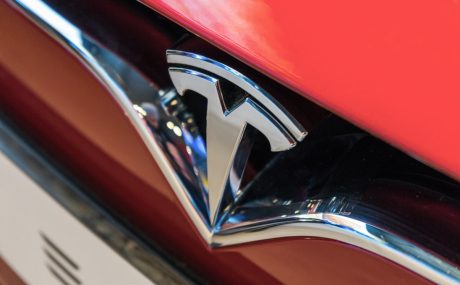Elon Musk’s recent tweet about the future of Tesla resulted in a flurry of shareholder claims being filed in the US. The fact the same didn’t happen here brought into stark contrast the difference between the state of shareholder litigation in the US versus that in England.
Group shareholder actions have increased in England over the past few years, causing speculation that we might be heading towards a US-style class action (read litigious) culture. But are we really that close?
Statutory provisions exist in both the US and England to allow shareholders who have suffered loss as a result of misstatements to the market to seek compensation. However, the legal requirements, procedural framework and practicalities of bringing such claims in the US and England are still very different. The US claims initiated against Tesla (and Elon Musk) highlight those differences.
The background to the Tesla claims started with a less than 10-word tweet from Elon Musk, founder and CEO of Tesla. In it, he said he was considering taking Tesla private and had “funding secured”. According to the claims filed just days after the tweet, the CEO knew exactly what he sought to achieve by this tweet (they say, to damage short sellers) and the share price soared. The claims allege that the tweet was untrue (funding was not secured) and those who bought shares in the short window following this tweet did so at an artificially inflated price.
It remains to be seen whether these claims will proceed and be successful, particularly in the light of Tesla having now settled with the SEC. It is reported that in 2017 the number of securities class actions brought in the US was more than one a day. Inevitably, a large number settle. By comparison, only a handful of shareholder claims under the statutory regime in England have ever been brought and to date none have gone to a full trial and received a judgment. There are several reasons why the volume of claims differs so greatly between these two jurisdictions and the Tesla case highlights some of them.
Legal distinctions
The statutory regime in England provides for two categories of claims by shareholders. Section 90 of the Financial Services and Markets Act (FSMA) relates to non-fraud based liability and provides compensation to shareholders who bought securities pursuant to a misleading prospectus. This section does not bite in the Tesla case. Section 90A FSMA comes closer, as it relates to open market shareholdings bought, held or sold in reliance on fraudulent statements in or omissions from certain publications by listed companies. The publications that count include a company’s annual report and accounts, interim accounts or information published by means of a recognised information service. A tweet would not be covered and the Tesla case could never get off the ground in England. In comparison, the claims brought in the US against Tesla are made under Rule 10b-5 of the Securities Exchange Act 1934, on the basis that a tweet is a public statement.
Assuming the statement had been published by a recognised information service, there are further legal distinctions between the two jurisdictions.
Under section 90A FSMA, the claimant must prove that it relied on the published statement in its decision to buy, hold or sell the shares in question. What constitutes reliance is yet to be tested and it remains to be seen what the English court will consider to be an appropriate means of establishing reliance. In view of the fact that securities actions may involve hundreds of claimants (and where retail shareholders are involved, potentially hundreds of thousands), a question arises as to whether it is proportionate and practical to require individual evidence of a claimant’s decision-making process. It also remains unclear whether, when drafting the statute, parliament intended that passive investment funds, which might not be considered to rely directly on public information, would have a remedy in respect of losses caused by fraudulent statements published by issuers. In dealing with these issues, the court’s approach may include:
- applying a “fraud on the market” theory (as exists in the US – see below),
- a rebuttable presumption of reliance (ie the burden is on the defendant to show there was no reliance),
- the use of test cases on reliance, or
- requiring evidence of reliance by each individual (with the obvious disclosure and evidential burdens that is likely to entail).
By comparison, claimants in the US can take advantage of a presumption of reliance based on the “fraud on the market” theory. This assumes that an efficient market absorbs material information and that information is reflected in the market price. If, (a) the defendant’s misrepresentation is material and public, (b) the security is traded in an efficient market and (c) the claimant purchased or sold the shares in the window between the misrepresentation being made and the truth being known, the claimant can establish reliance by simply showing that the misrepresentation affected the price.
Other elements of the theoretical claims in the two jurisdictions are similar. Under Rule 10b-5, a claimant must prove ‘scienter’, that is intentional or knowing misconduct (and it must be pleaded with sufficient specificity). Under section 90A, a claimant must show that a person discharging managerial responsibility knew or was reckless as to whether the statement was untrue or misleading. Fraud standards are, arguably, applicable to section 90A claims and, therefore, the allegations must also be pleaded with sufficient particularity. Similarly, both jurisdictions require claimants to show a causal link between the misrepresentation and the loss suffered.
The difference between the US and England however, is that there is no case law in England to guide us on how the courts will apply the statute in relation to these elements. It Is unknown for example whether a claimant have to show that the loss caused by the misrepresentation is not too remote. Furthermore, the applicable measure of loss and the calculation of damages is untested. In the US, there is an advanced understanding of both these elements. This has created a mature market of experts offering “event studies” to calculate how much of a share’s price fall is attributable to the discovery of the fraud. In comparison, in England, only analogous case law can be relied on.
Practicalities
Practical and procedural differences between the two jurisdictions further explain why England is some way off the litigious class action culture of the US that some people fear. Several claims being issued against Tesla within days of the, allegedly, false announcement simply would not happen in England due to some of these differences.
The first is the availability in the US of an “opt out” system for collective actions. This means that to file a claim, only one willing claimant is required to act as a representative of the class. A process is then followed whereby the class, if it meets the necessary requirements, is certified and notice is given to all members. All members of the class are automatically included (and eligible for damages) unless they specifically opt out. Inevitably this means that the quantum of losses a defendant might face can be huge. This encourages law firms acting on a contingent basis to pursue potential claims actively, and defendants to settle.
In comparison, whilst English procedural law provides a framework for multi-claimant actions to be case managed collectively, (either as representative actions or under group litigation orders), neither has yet provided a way for group securities actions to be brought on an opt out basis. Representative actions require each claimant to have identical interests in the claim, making them unavailable to s90A claimants who may have different trading and reliance fact patterns. A group litigation order allows claims that give rise to common or related issues of fact or law to be managed together but does not obviate the need for each and every claimant to instruct a firm of solicitors and file a claim form.
The second fundamental practical difference between the two systems is the concept of costs shifting, which is the default position in England but not in the US. If a claimant in England loses its claim, it is liable to pay the defendant’s reasonable costs (except in rare circumstances). Whilst insurance is now available to cover this risk, it comes at a price and adverse costs risk fundamentally affects a claimant’s risk/reward analysis when considering whether to file a claim.
The reality of these two practical issues materially reduces the prevalence of securities actions in England. For a successful claim to be mounted against Tesla, even theoretically (leaving aside the legal hurdles), would require an individual claimant or group of claimants to have sufficient estimated losses to take on the risk of the substantial costs involved, both its own and adverse. Add to this the management time required to mount a case of this size and the legal uncertainties discussed above and it becomes clear that as the law currently stands, England is some way off having a similar culture of securities class actions as the US. While this might have the oft-cited benefit of largely avoiding unmeritorious claims, the hurdles in the path of many English security litigation cases mean that England does not get the improved corporate governance benefits that the more robust securities litigation practice in the US encourages.
You can find further information regarding our expertise, experience and team on our Securities Litigation pages.
If you require assistance from our team, please contact us or alternatively request a call back from one of our lawyers by submitting this form.
Subscribe – In order to receive our news straight to your inbox, subscribe here. Our newsletters are sent no more than once a month.





